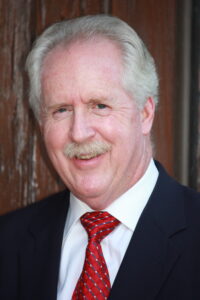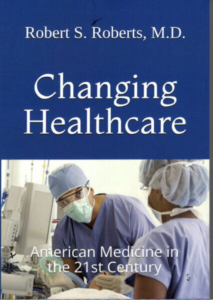ObamaCare is failing and Congress can’t agree on a solution. Conservative Republicans can’t seem to find agreement with moderates. Democrats agree – but they want socialized medicine.
ObamaCare increased the number of insured Americans by about 20 million – but still left 30 million uninsured and forced 15 million more onto the rolls of Medicaid. If nothing is done it will implode soon when insurers refuse to provide coverage options on the marketplace exchanges. Something must be done – and soon. What is the solution?
Three Solutions
Duke University professor Chris Conover has been studying healthcare economics for over forty years and he offers three possible solutions:
- Universal Catastrophic Coverage
- Universal Safety Net
- Responsible Federalism
Today I will discuss the first of these solutions – Universal Catastrophic Coverage.
Universal Catastrophic Coverage
One of the reasons the American Health Care Act (AHCA) failed to garner enough votes to pass the House of Representatives was the report of the Congressional Budget Office (CBO), which estimated 24 million Americans would lose their insurance coverage in the next ten years. Although many of those would voluntarily give up their coverage with the elimination of the Individual Mandate, this reduction in the number of insured was considered unacceptable.
President Trump has argued repeatedly he wants “coverage for all.” Achieving that goal would certainly gain bipartisan support if it can be done in a fiscally responsible manner. Conover says this can be achieved in two ways: through a private sector approach or through a public sector approach.
Private Sector Approach
The American Enterprise Institute (AEI) has offered the Improving Health and Health Care Plan which they estimated would result in 16 million more Americans having coverage in 2025 compared to ObamaCare even while reducing the budget deficit by $1.9 Trillion over 10 years. Even if you eliminate the Medicare reforms in this plan, which account for $1.56 Trillion in savings, there is still $350 Billion in deficit reduction. (This plan was reviewed earlier in a post called Comparing the Republican ObamaCare Replacement Plans – Part III.)
This plan calls for modest age-related tax credits adequate to purchase catastrophic coverage for virtually everyone – but would not include the comprehensive coverage plan currently being offered to most workers or sold on the ObamaCare exchanges. Those who failed to purchase such plans would be automatically enrolled – thus achieving universal coverage.
Plans of this nature have been discussed and advocated by analysts on both sides of the political spectrum dating back over 40 years to 1971 when Harvard professor Martin Feldstein first proposed this. His idea was updated in 1994 in a joint paper with Harvard economist Jonathan Gruber, one of the architects of ObamaCare.\
Public Sector Approach
Singapore’s healthcare system has been studied and lauded by many healthcare experts. They offer a system of three parts that provides a combination of government support and private responsibility.
- Medisave – Compulsory contributions from both employees and employers creates medical savings accounts. Contributions vary by age, as does the fraction of overall contributions that go into individual medical savings accounts. The Medisave share ends up ranging from 7 – 9.5% of wages. Those who fail to pay their premiums are subject to garnished wages and other legal actions that can force payment of back premiums, penalties, and interest.
- Medishield – This program covers catastrophic expenses. It helps cover a portion of expenses for hospitalization and certain outpatient treatments, such as kidney dialysis and cancer treatments. Everyone is automatically enrolled unless they opt out. This is a single-payer health plan run by the government.
- Medifund – This program is similar to our Medicaid. It subsidizes premiums for the purchase of private insurance for unemployed or low-income individuals. It is a system of last resort for those unable to pay for their subsidized healthcare bills even after using their Medisave money and Medishield
Singapore’s healthcare system ranks sixth in the world in healthcare outcomes and the country only spends 5% of GDP – less than one third of the United States (17.8%)
Conover summarizes the plan: “Most Singaporeans self-finance their own medical care through mandatory contributions to medical savings accounts used to directly purchase care and some private insurance. A publicly-run catastrophic health plan protects them from catastrophic expenses and a Medicaid-style plan provides subsidies for the poor and unemployed to purchase coverage.”
Will people with only catastrophic coverage suffer from poorer healthcare outcomes?
A RAND Health Insurance Experiment study conducted 40 years ago answers this question. It showed that people with high-deductible plans (and no health savings accounts) had not better or worse physical or mental health compared to those whose care was entirely free. The only exception was low-income people who had some adverse outcomes with higher blood pressure and poorer eyesight. However, both the AEI and Singapore plans maintain a system that provides subsidized coverage for low-income people, which should eliminate this problem.
The take-home message is this: A system that provides less coverage to more people is preferable to one that allocates the same amount of dollars to cover fewer people with more comprehensive plans (ObamaCare).
Is a Universal Catastrophic Coverage plan politically feasible?
This is certainly a plan that both Democrats and Republicans can find things to like. It offers more coverage of more Americans at a much lower price. That should go a long way toward garnering enough support to become law.
(In Part II I will review other solutions offered by Chris Conover.)

